Apple-computers, zoals de MacBook, zijn bekend om hun lange batterijlevensduur. Deze duurzaamheid is voornamelijk te danken aan de efficiënte energiebeheerfuncties van de MacBook, waaronder de Slaapstand en Sluimerstand instellingen.
Wanneer een MacBook wordt dichtgeklapt, schakelt deze automatisch over op de slaapstand. In deze modus wordt het scherm gedimd en de harde schijf uitgeschakeld, wat aanzienlijk bijdraagt aan het besparen van de batterij. In dit artikel zal ik uitleggen hoe u de Slaapstand en Sluimerstand op uw Mac kunt aanpassen om ze optimaal af te stemmen op uw gebruikspatronen en behoeften. Deze aanpassingen kunnen helpen om de levensduur van uw batterij verder te verlengen en de algehele efficiëntie van uw apparaat te verbeteren.
Alles over Mac en Sluimerstand instellingen met gratis apps
Apps om slaapstand uit te schakelen
Zoals eerder gezegd, als u een MacBook dichtklapt dan gaat de MacBook over in Slaapstand. Er is geen manier om dit te wijzigen via de Mac instellingen, als u wilt dat u Mac niet in slaapstand gaat op het moment dat u het scherm dichtklapt heeft u een applicatie nodig die dit voorkomt.
Meld u dan aan voor onze nieuwsbrief.
InsomniaX
InsomniaX is een applicatie die voorkomt dat uw Mac in slaapstand gaat wanneer de klep gesloten wordt.
Om InsomniaX te gebruiken, downloadt u eerst de versie InsomniaX-2.1.8.tgz. Na de installatie vindt u de instellingen van InsomniaX bovenin de menubalk van uw Mac. Door op het InsomniaX-icoon te klikken en te kiezen voor ‘Disable Idle Sleep’ in het menu, activeert u de functie.
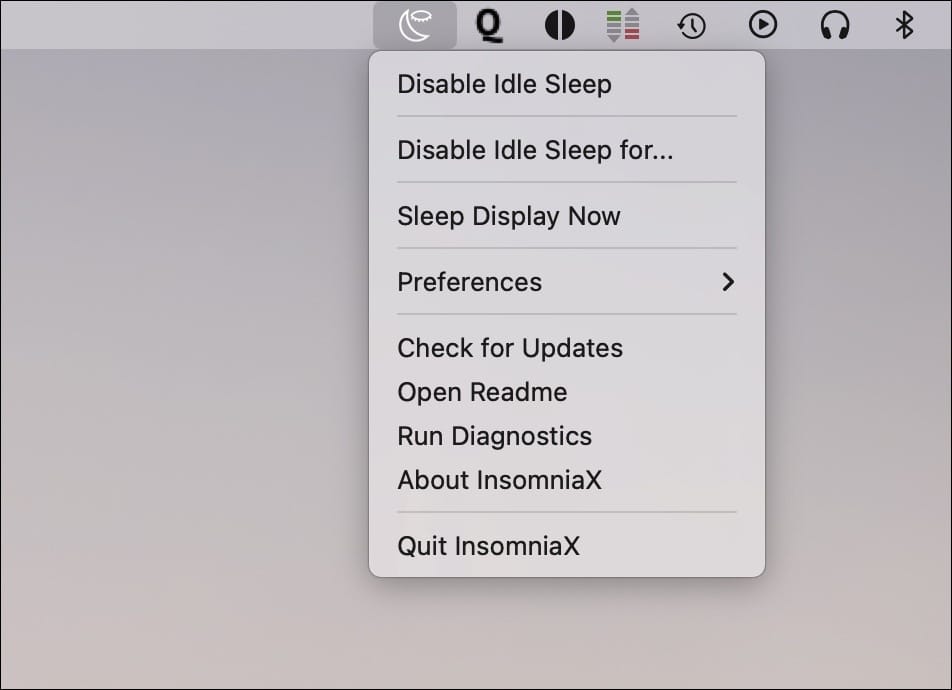
Bij het inschakelen van deze functie wordt u mogelijk gevraagd uw beheerderswachtwoord in te voeren en een systeemextensie toe te staan. Deze toestemming is essentieel voor de werking van InsomniaX. Mocht uw scherm zwart worden, beweeg dan simpelweg de muis om het weer te activeren.
Zodra ‘Disable Lid Sleep’ actief is, wordt het icoon van InsomniaX in de menubalk van de Mac zwart. Dit is de indicatie dat de functie is ingeschakeld.
Het is belangrijk om te weten dat InsomniaX al enige tijd niet meer officieel ondersteund wordt, hoewel het nog steeds functioneert. De exacte duur van de functionaliteit van InsomniaX voor Mac in de toekomst is echter onzeker.
Amphetamine
Er zijn verschillende applicaties beschikbaar die het mogelijk maken om de slaapstand van een Mac te beheren. Een bekende applicatie was Caffeine, maar deze wordt niet meer ondersteund. Een modern alternatief is Amphetamine.
Daarnaast biedt macOS zelf ingebouwde functionaliteiten om te voorkomen dat uw Mac in slaapstand gaat. Deze opties zijn toegankelijk via de Systeemvoorkeuren, waar u energiebeheeropties kunt aanpassen om de slaapstand te beheren. Dit biedt een geïntegreerde oplossing zonder dat u extra software hoeft te downloaden.
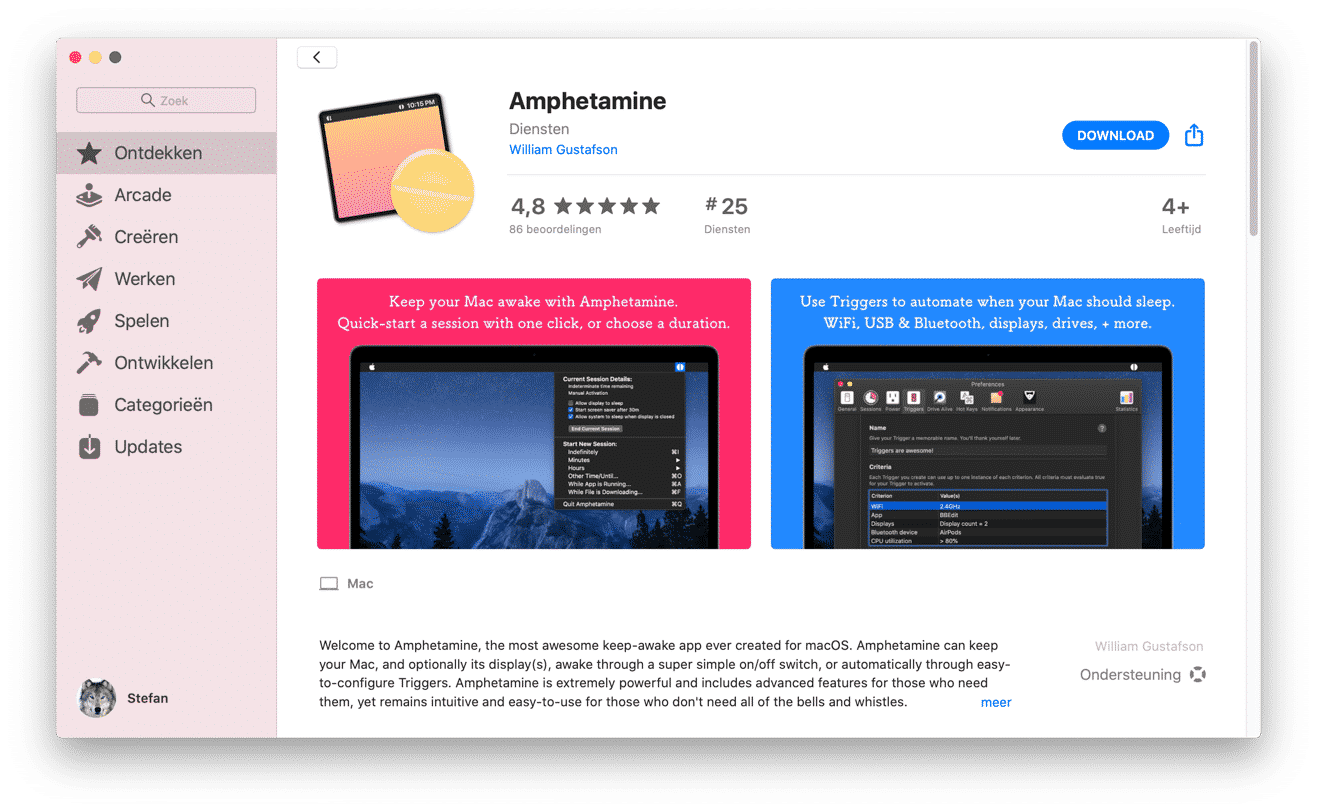
Caffeinate
Het ‘caffeinate’ commando in macOS is een handig hulpmiddel om te voorkomen dat uw Mac in slaap valt. Om dit commando te gebruiken, opent u eerst Terminal: druk op Command + Spatiebalk, typ ‘Terminal’ en voer het commando ‘caffeinate’ in het geopende terminalvenster in.
Zodra u ‘caffeinate’ uitvoert, zal de cursor in Terminal naar een nieuwe, lege regel gaan en daar blijven staan. Uw Mac zal niet in slaap vallen zolang dit commando actief is. Om het ‘caffeinate’ proces te beëindigen, drukt u op Ctrl + C, waardoor het proces stopt en u terugkeert naar de normale Terminal-prompt.
Apple biedt verschillende opties met het ‘caffeinate’ commando om aan uiteenlopende behoeften te voldoen:
-d: Voorkomt dat het scherm in slaapstand gaat.-i: Voorkomt dat het systeem in slaap valt.-s: Voorkomt systeemslaap, alleen effectief als de Mac op accustroom werkt.-u: Geeft aan dat een gebruiker actief is. Als het scherm uitgeschakeld is, zal deze optie het scherm inschakelen en voorkomen dat het in slaapstand gaat.-t: Specificeert de duur in seconden dat het ‘caffeinate’ commando actief blijft.
Deze opties bieden flexibiliteit voor verschillende situaties, zodat gebruikers hun Mac kunnen configureren naar hun specifieke behoeften.
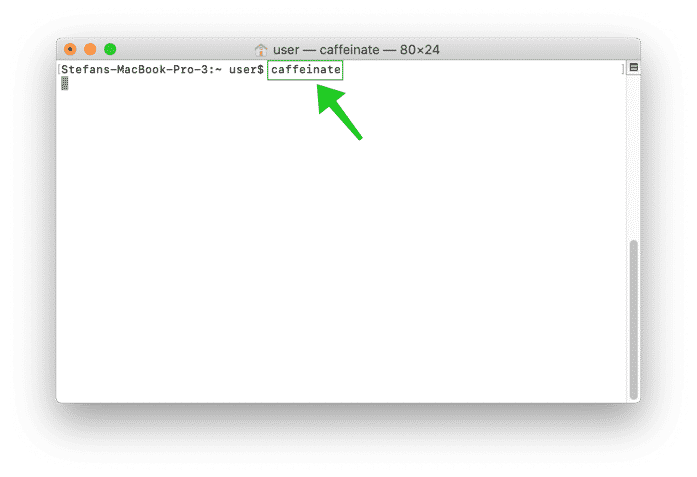
Automatisch slaapstand na specifieke tijd periode
Om uw Mac zo in te stellen dat deze automatisch in slaapstand gaat na een bepaalde tijd, volgt u deze stappen:
Klik op het Apple-logo linksboven op uw scherm en selecteer ‘Systeemvoorkeuren’. Kies vervolgens ‘Energiestand’ of ‘Energiebesparing’, afhankelijk van uw macOS-versie.
Zoek naar de schuifregelaar met het label “Schakel beeldscherm uit na”. Deze regelaar bepaalt na hoeveel tijd van inactiviteit uw Mac’s scherm en uiteindelijk de computer zelf in slaapstand gaan.
Sleep de schuifregelaar naar de tijd die u wenst voor het automatisch uitschakelen van het scherm en het activeren van de slaapstand. U kunt kiezen uit verschillende tijdsintervallen, variërend van enkele minuten tot enkele uren, afhankelijk van uw voorkeur.
Controleer of de optie “Voorkom dat computer automatisch in sluimerstand wordt geplaatst als het beeldscherm uit is” niet is aangevinkt. Als deze optie is geselecteerd, kan uw Mac niet automatisch in slaapstand gaan, zelfs niet als het scherm is uitgeschakeld.
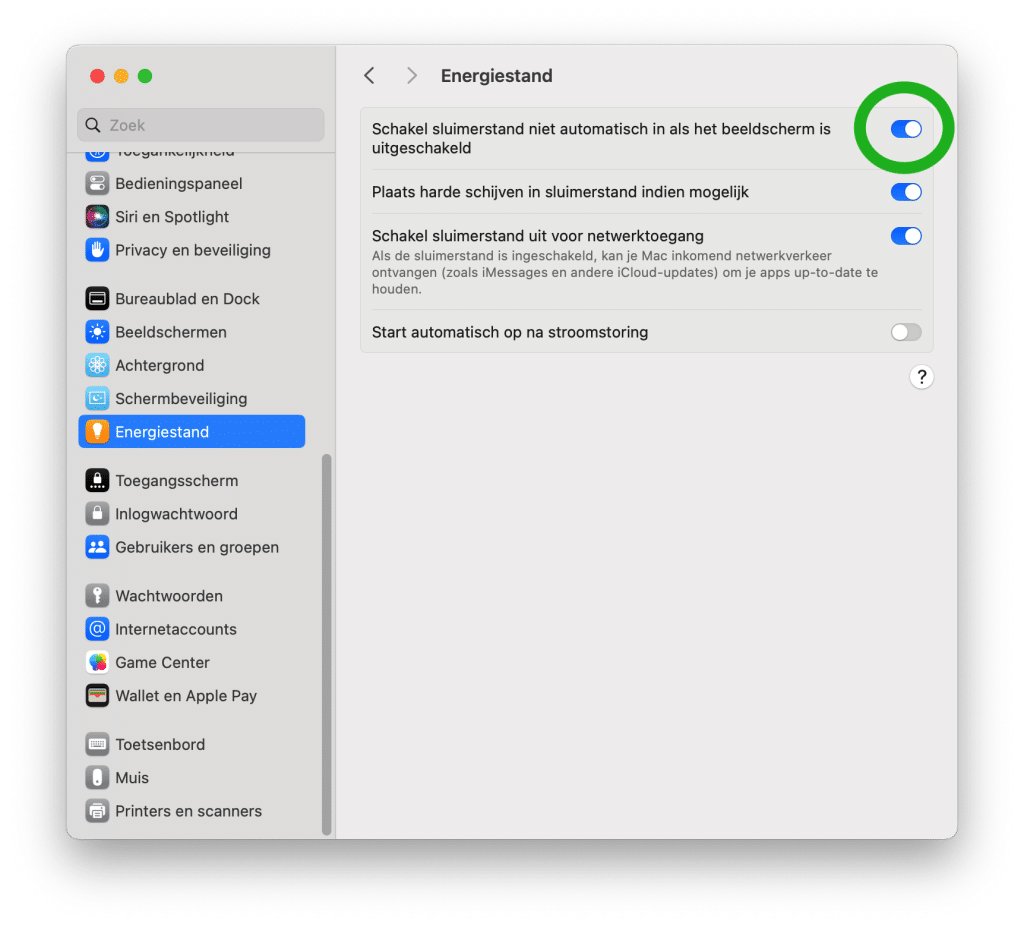
Door deze instellingen aan te passen, kunt u de energie-efficiëntie van uw Mac optimaliseren en ervoor zorgen dat deze alleen actief is wanneer nodig. Dit is vooral handig om energie te besparen en de levensduur van de batterij te verlengen als u de Mac niet gebruikt.
Mac gaat niet in slaapstand?
Wanneer uw Mac niet in slaapstand gaat, ondanks de ingestelde tijd in de Energie-instellingen, kan dit veroorzaakt worden door actieve netwerkactiviteiten of processen, zoals bepaalde programma’s of systeemachtergrondtaken. Hier volgen gedetailleerde stappen om te controleren en op te lossen waarom uw Mac niet in slaapstand valt:
macOS heeft een ingebouwd hulpprogramma genaamd ‘Activiteitenweergave’ dat inzicht geeft in lopende processen op uw Mac.
Druk op Command + Spatiebalk om Spotlight te openen, typ ‘Activiteitenweergave’ en druk op Enter om de applicatie te openen.
In Activiteitenweergave, ga naar het tabblad ‘Energie’. Dit tabblad geeft een overzicht van de energie-impact van lopende processen en applicaties.
In de kolom ‘Verhindert sluimerstand’ kunt u zien welke applicaties of processen voorkomen dat uw Mac in slaapstand valt. Deze kolom geeft aan met ‘Ja’ voor processen die actief de slaapstand onderdrukken.
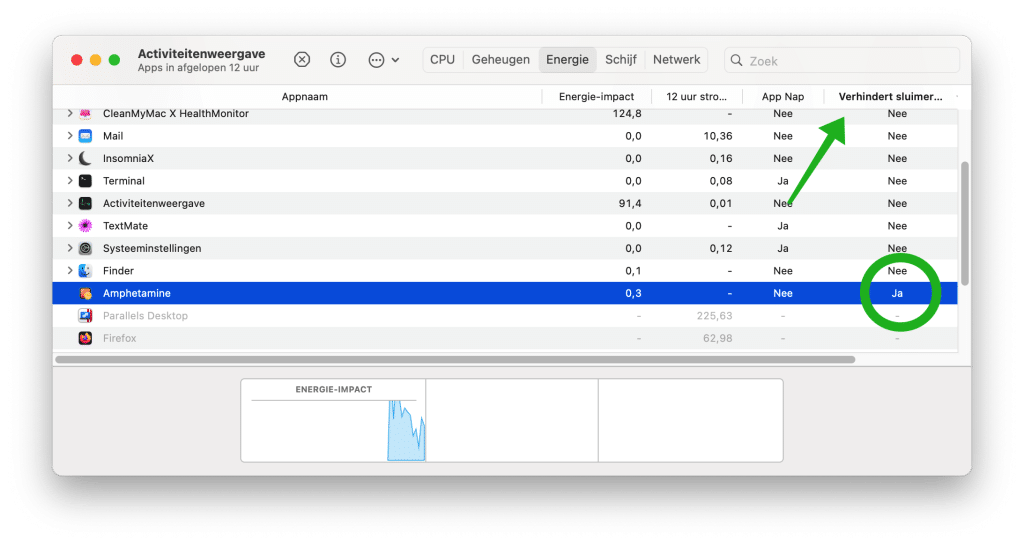
Als u een of meerdere processen of applicaties vindt die ‘Ja’ aangeven in de kolom ‘Verhindert sluimerstand’, kunt u overwegen deze applicaties of processen te sluiten. Dit kan vaak door simpelweg de applicatie af te sluiten, of, als het een achtergrondproces betreft, door het proces te beëindigen via Activiteitenweergave.
Door deze stappen te volgen, kunt u de oorzaak identificeren en verhelpen waarom uw Mac niet in de gewenste slaapstand gaat. Dit is nuttig voor zowel het besparen van energie als het optimaliseren van de prestaties van uw Mac.
Lees verder: Optimaliseer uw Mac door uw Mac sneller te maken met deze gids.
Ik hoop u hiermee geholpen te hebben. Bedankt voor het lezen!


Mijn MacBook Pro late 2015 schakelt na een tijdje in sluimerstand te hebben gezeten, volledig uit. Dus ik moet de MacBook vaak volledig opstarten, wat ook nog eens erg lang duurt. Heb je een oplossing?
Hoi, mogelijk leest u hier de oplossing:
https://discussions.apple.com/thread/8291902Succes!Ik heb het gevoel dat mijn mac pro niet in de slaapstand gaat. Waarom niet; omdat de aan- en uitknop van de mac pro maar heel even langzaam knippert, om vervolgens constant aan te blijven staan en veel warmte afgeeft. Mijn vraag; hoe weet ik zeker dat mijn mac pro echt in de slaapstand staat? – er zijn geen applicaties die dit kunnen voorkomen en ik heb de boel dusdanig ingesteld dat de mac pro mag gaan slapen.
Groet Henriëtte
Hallo, dat is voor mij niet te beoordelen. Ik heb een artikel van Apple Support gevonden met meerdere controles:
https://support.apple.com/nl-nl/guide/mac-help/mchlp2995/
Succes!
Bedankt voor het bieden van deze optie.
Ik heb een macbook air. Als ik de sluimertijd inschakel dan lukt dit. Echter, als ik dan mn macbook dichtklap, gaat die direct weer aan terwijl die dicht is. Zou je hiervoor een oplossing hebben?
Mijn dank is groot!
Groeten Marko
Hallo, nee niet direct. Er is wel iemand met een soortgelijk probleem, hier leest u meer: https://discussions.apple.com/thread/5388936
Groet, Stefan